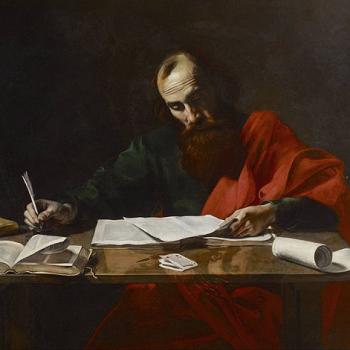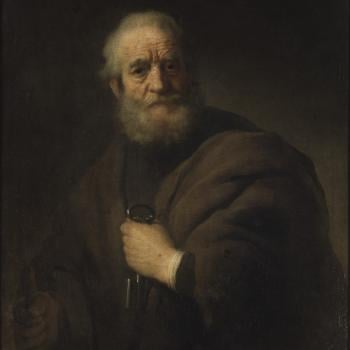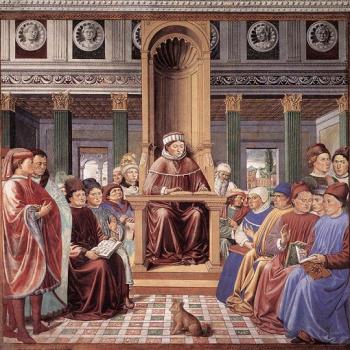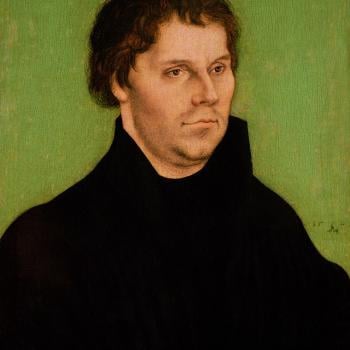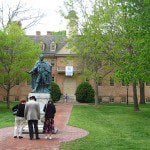Including Protestant Reformers & Aquinas On In Partu Virginity; Biblical Data on Jesus’ “Brothers”
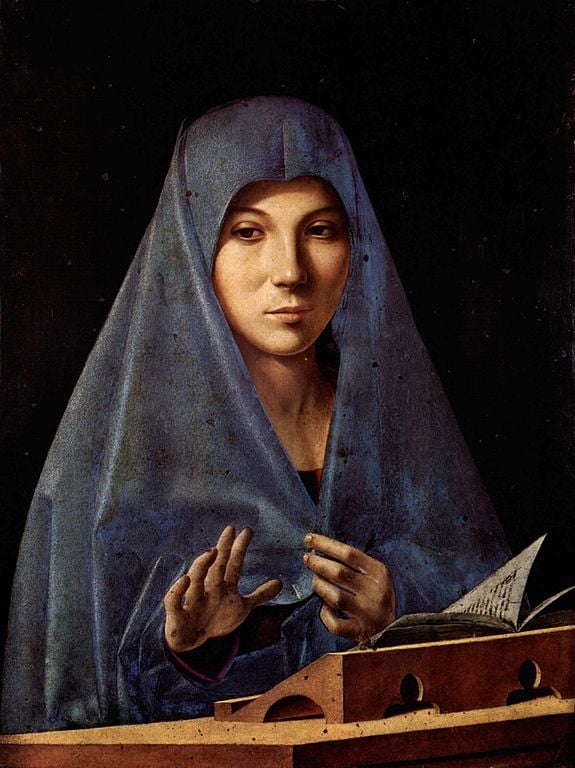
Norman L. Geisler (1932 – 2019) was an American evangelical Protestant theologian, philosopher, and apologist. He obtained an M.A. in theology from Wheaton College and a Ph.D. in philosophy from Loyola University, and made scholarly contributions to the subjects of classical Christian apologetics, systematic theology, philosophy of religion, Calvinism, Catholicism, biblical inerrancy, Bible difficulties, biblical miracles, the resurrection of Jesus, ethics, and other topics. He wrote or edited more 90 books and hundreds of articles.
Dr. Geisler was the Chairman of Philosophy of Religion at Trinity Evangelical Divinity School (1970–79) and Professor of Systematic Theology at Dallas Theological Seminary (1979–88) and a key figure in founding the Evangelical Philosophical Society. He also co-founded Southern Evangelical Seminary. He was known as an evangelical Thomist and considered himself a “moderate Calvinist”. He was not an anti-Catholic (i.e., he didn’t deny that Catholicism was fully a species of Christianity).
This is one of a series of comprehensive replies to his book, Roman Catholics and Evangelicals: Agreements and Differences (co-author, Ralph E. MacKenzie, graduate of Bethel Theological Seminary-West; Grand Rapids, Michigan: Baker Academic, 1995). It’s available online in a public domain version, which has no page numbers, so I will utilize page numbers from my paperback copy, for the sake of full reference. I consider it the best Protestant critique of Catholicism (especially in terms of biblical arguments) that I have ever found, from any time period. The arguments are, for the most part, impressively presented, thought-provoking, respectful, respectable, and worthy of serious consideration (which I’m now giving them).
I’ll be concentrating on the eight sections of Part Two: “Areas of Doctrinal Differences” (202 pages). These installments will be listed and linked on my Calvinism & General Protestantism web page, in section XVII: “Catholics and Protestants” (second from the end). Dr. Geisler’s and Ralph MacKenzie’s words will be in blue. My biblical citations are from RSV.
*****
Catholics also believe, contrary to Protestants, that Jesus was also born in a way that left Mary a virgin.’ Ott puts it this way: “Mary bore her son without
any violation of her virginal integrity.” This is considered an official doctrine of Catholicism on the grounds of general proclamation. How this happened, however, is not a matter of Catholic dogma. Generally, traditional Catholic scholarship held that “Mary gave birth in miraculous fashion without opening of the womb and injury to the hymen, and consequently also without pains.” [citing Ludwig Ott, Fundamentals of Catholic Dogma, TAN Books, 1960, p. 205] (p. 300)
The idea of a miraculous birth of Christ, without coming through the birth canal or causing pain, is more Gnostic than Christian. It is more like an event found in a second- or third-century apocryphal book than a first-century inspired Book. (p. 301)
What is called Mary’s virginity “in partu” — virginity historically defined as an intact hymen, not simply absence of sexual relations — is not simply Catholic belief, because the founder of Protestantism, Martin Luther, also believed in it:
She brought forth without sin, without shame, without pain and without injury, just as she had conceived without sin. The curse of Eve did not come on her, where God said: “In pain thou shalt bring forth children,” Gen. 3:16; otherwise it was with her in every particular as with every woman who gives birth to a child. (Sermon for Christmas Eve; Luke 2:1-14, translated by George H. Trabert, 24 December 1521; in Vol. 1 of Sermons of Martin Luther, The Church Postils; edited and partially translated by John Nicholas Lenker, 8 volumes. Volumes 1-5 were originally published in Minneapolis by Lutherans of All Lands, 1904-1906; my bolding and italics)
She gave birth without labor, pain, and injury to herself, not as Eve and all other women, but because by the Holy Spirit and without sin, . . . (Personal Prayer Book, 1522, in Luther’s Works, vol. 43, p. 40; my italics and bolding)
Scripture stops with this, that she was a virgin before and at the birth of Christ; . . . (That Jesus Christ Was Born a Jew, May 1523, in Luther’s Works, Vol. 45, p. 206; my italics and bolding)
In chapter 7 he even describes the mother of Christ, the Virgin Mary, how she is to conceive and bear him with her virginity intact. (Preface to the Prophet Isaiah, 1528, in Luther’s Works, vol. 35, p. 275 [see an alternate translation]; my italics and bolding)
To his credit, Geisler does acknowledge that “Some Protestants have accepted Mary’s perpetual virginity, including Luther” (p. 301), even quoting Luther to the effect that he accepted Mary’s in partu virginity. That’s more than we get from most Protestant treatments of this topic. But he’s not presenting the whole truth, namely, that “classic” or “mainstream” Protestant or “Reformation” doctrine virtually unanimously concurred with Catholicism regarding Mary’s perpetual virginity, and to a lesser but still very significant degree, they also believed in her in partu virginity.
These beliefs were only discarded much later: generally during the period of increasing liberalization of Protestant theological beliefs in the 18th-19th centuries. Here are three more early Protestant leaders who believed in in partu virginity:
Huldreich Zwingli, the third most important early Protestant leader after Luther and Calvin, also believed in Mary’s in partu virginity:
To deny that Mary remained ‘inviolata’ before, during and after the birth of her Son, was to doubt the omnipotence of God . . . and it was right and profitable to repeat the angelic greeting – not prayer – ‘Hail Mary’ . . . God esteemed Mary above all creatures, including the saints and angels – it was her purity, innocence and invincible faith that mankind must follow. (The Perpetual Virginity of Mary, September 17, 1522; noted in G. R. Potter, Zwingli [London: Cambridge Univ. Press, 1976], pp. 88-89; my italics and bolding)
I believe with all my heart according to the word of holy gospel that this pure virgin bore for us the Son of God and that she remained, in the birth and after it, a pure and unsullied virgin, for eternity. (Sermon: Mary, Ever Virgin, Mother of God, in 1524, cited in Max Thurian, Mary: Mother of All Christians [New York, Herder and Herder, 1963] p. 76; primary source listed on p. 196: Collected Works, Berlin, I, 391-428; my italics and bolding)
He defends Mary’s perpetual virginity, including the virginity in partu . . . (Mary: A History of Doctrine and Devotion, revised edition, Ave Maria Press, 2009, p. 15)
Article 2. Whether Christ’s Mother was a virgin in His birth?
[. . .]
In a sermon of the Council of Ephesus (P. III, Cap. ix) it is said: “After giving birth, nature knows not a virgin: but grace enhances her fruitfulness, and effects her motherhood, while in no way does it injure her virginity.” Therefore Christ’s Mother was a virgin also in giving birth to Him.
I answer that, Without any doubt whatever we must assert that the Mother of Christ was a virgin even in His Birth: for the prophet says not only: “Behold a virgin shall conceive,” but adds: “and shall bear a son.” [Is 7:14; cited in Mt 1:22-23] This indeed was befitting for three reasons. First, because this was in keeping with a property of Him whose Birth is in question, for He is the Word of God. For the word is not only conceived in the mind without corruption, but also proceeds from the mind without corruption. Wherefore in order to show that body to be the body of the very Word of God, it was fitting that it should be born of a virgin incorrupt. Whence in the sermon of the Council of Ephesus (quoted above) we read: “Whosoever brings forth mere flesh, ceases to be a virgin. But since she gave birth to the Word made flesh, God safeguarded her virginity so as to manifest His Word, by which Word He thus manifested Himself: for neither does our word, when brought forth, corrupt the mind; nor does God, the substantial Word, deigning to be born, destroy virginity.”
Secondly, this is fitting as regards the effect of Christ’s Incarnation: since He came for this purpose, that He might take away our corruption. Wherefore it is unfitting that in His Birth He should corrupt His Mother’s virginity. Thus Augustine says in a sermon on the Nativity of Our Lord: “It was not right that He who came to heal corruption, should by His advent violate integrity.”
Thirdly, it was fitting that He Who commanded us to honor our father and mother should not in His Birth lessen the honor due to His Mother.
Reply to Objection 1. Ambrose says this in expounding the evangelist’s quotation from the Law: “Every male opening the womb shall be called holy to the Lord.” This, says Bede, “is said in regard to the wonted manner of birth; not that we are to believe that our Lord in coming forth violated the abode of her sacred womb, which His entrance therein had hallowed.” Wherefore the opening here spoken of does not imply the unlocking of the enclosure of virginal purity; but the mere coming forth of the infant from the maternal womb.
Reply to Objection 2. Christ wished so to show the reality of His body, as to manifest His Godhead at the same time. For this reason He mingled wondrous with lowly things. Wherefore, to show that His body was real, He was born of a woman. But in order to manifest His Godhead, He was born of a virgin, for “such a Birth befits a God,” as Ambrose says in the Christmas hymn.
Reply to Objection 3. Some have held that Christ, in His Birth, assumed the gift of “subtlety,” when He came forth from the closed womb of a virgin; and that He assumed the gift of “agility” when with dry feet He walked on the sea. But this is not consistent with what has been decided above (Article 14). For these gifts of a glorified body result from an overflow of the soul’s glory on to the body, as we shall explain further on, in treating of glorified bodies (Supplement:82): and it has been said above (III:13:3 ad 1; III:16:1 ad 2) that before His Passion Christ “allowed His flesh to do and to suffer what was proper to it” (Damascene, De Fide Orth. iii): nor was there such an overflow of glory from His soul on to His body.
We must therefore say that all these things took place miraculously by Divine power. Whence Augustine says (Sup. Joan. Tract. 121): “To the substance of a body in which was the Godhead closed doors were no obstacle. For truly He had power to enter in by doors not open, in Whose Birth His Mother’s virginity remained inviolate.” And Dionysius says in an epistle (Ad Caium iv) that “Christ excelled man in doing that which is proper to man: this is shown in His supernatural conception, of a virgin, and in the unstable waters bearing the weight of earthly feet.”
Article 3. Whether Christ’s Mother remained a virgin after His birth?
[. . .]
It is written (Ezekiel 44:2): “This gate shall be shut, it shall not be opened, and no man shall pass through it; because the Lord the God of Israel hath entered in by it.” Expounding these words, Augustine says in a sermon (De Annunt. Dom. iii): “What means this closed gate in the House of the Lord, except that Mary is to be ever inviolate? What does it mean that ‘no man shall pass through it,’ save that Joseph shall not know her? And what is this—’The Lord alone enters in and goeth out by it’—except that the Holy Ghost shall impregnate her, and that the Lord of angels shall be born of her? And what means this—’it shall be shut for evermore’—but that Mary is a virgin before His Birth, a virgin in His Birth, and a virgin after His Birth?”
I answer that, Without any hesitation we must abhor the error of Helvidius, who dared to assert that Christ’s Mother, after His Birth, was carnally known by Joseph, and bore other children. For, in the first place, this is derogatory to Christ’s perfection: for as He is in His Godhead the Only-Begotten of the Father, being thus His Son in every respect perfect, so it was becoming that He should be the Only-begotten son of His Mother, as being her perfect offspring.
Secondly, this error is an insult to the Holy Ghost, whose “shrine” was the virginal womb [“Sacrarium Spiritus Sancti” (Office of B. M. V., Ant. ad Benedictus, T. P.), wherein He had formed the flesh of Christ: wherefore it was unbecoming that it should be desecrated by intercourse with man.
Thirdly, this is derogatory to the dignity and holiness of God’s Mother: for thus she would seem to be most ungrateful, were she not content with such a Son; and were she, of her own accord, by carnal intercourse to forfeit that virginity which had been miraculously preserved in her.
Fourthly, it would be tantamount to an imputation of extreme presumption in Joseph, to assume that he attempted to violate her whom by the angel’s revelation he knew to have conceived by the Holy Ghost.
We must therefore simply assert that the Mother of God, as she was a virgin in conceiving Him and a virgin in giving Him birth, did she remain a virgin ever afterwards.
There are clear references to Jesus’ brothers and sisters in the context of his immediate family (namely, his legal father and actual mother), which almost always indicate they were actual brothers, not cousins, as many Catholics believe. For example, Matthew 13:55 declares: “Is he not the carpenter’s son? Is not his mother Mary and his brothers James, Joseph, Simon, and Judas? Are not his sisters all with us?” (cf. Matt. 12:46 and Gal. 1:19). There are several reasons why this text almost certainly indicates that Mary had other children after Jesus. For one thing, “brothers” and “sisters” are mentioned in the context of the family with the “carpenter’s son” and “mother,” which clearly indicates they are immediate blood brothers. For another, the Greek term for “brother” (adelphos) here is the normal word for “blood brother.” In fact, there is no a single example where adelphos is used for “cousin” in the New Testament. There is a word for “cousin” (anepsios), as in Colossians 4:10, where Mark is described as “the cousin [anepsios] of Barnabas.” But this word is not used in Matthew 13 or in any passage referring to Jesus’ brothers and sisters. Finally, the words “brother” and “sister” are used many other times in the New Testament in a family connection, always meaning a literal blood brother or sister (Mark 1:16, 19; 13:12; John 11:1-2; Acts 23:16; Rom. 16:15). (pp. 302-303)
In view of all this biblical evidence, there seems to be no real scriptural basis for the Catholic belief in Mary’s perpetual virginity. (p. 303)
The idea that Mary had children after Jesus is only “horrifying,” as some Catholics claim, if one presupposes some kind of Gnostic concept of virginal purity. (p. 303)
Mark 6:3-4 Is not this the carpenter, the son of Mary and brother of James and Joses and Judas and Simon, and are not his sisters here with us?” And they took offense at him. [4] And Jesus said to them, “A prophet is not without honor, except in his own country, and among his own kin, and in his own house.” (cf. Mt 13:57: “in his own country and in his own house”; Lk 4:24: “no prophet is acceptable in his own country.”)
1) The New Testament never uses the phrases, “son[s] of Mary” or “son[s] of Joseph” for anyone besides Jesus.
2) “Son of Mary” appears once, referring to Jesus (Mk 6:3 above). He is called “brother” of four men and “his sisters” are mentioned. Yet none of them are called “sons / daughters” of Mary or Joseph.
3) The phrase, “Mary’s sons” never appears in the New Testament.
4) Neither one of the phrases, “daughter[s] of Mary” or “Mary’s daughter[s]” ever appear in the New Testament.
5) “Son of Joseph” (referring to the carpenter from Nazareth) appears twice: both times referring to Jesus (Jn 1:45; 6:42).
6) “Sons of Joseph” appears once (Heb 11:21), but unfortunately for deniers of Mary’s perpetual virginity, it refers to the patriarch Joseph. Why is that, if these are his sons and Jesus’ supposed siblings?
7) The phrase, “Joseph’s sons” never appears in the New Testament.
8) The phrase, “Daughter[s] of Joseph” never appears in the New Testament.
9) The phrase, “Joseph’s daughter[s]” never appears in the New Testament.
10) Mary is never called the “mother” of these alleged siblings of Jesus, whereas she is called Jesus’ “mother” (Jn 2:1; 19:25).
11) In the following two passages, these “brothers” were mentioned but Mary wasn’t called their mother; only Jesus‘ mother:
Matthew 13:55 “Is not this the carpenter’s son? Is not his mother called Mary? And are not his brothers James and Joseph and Simon and Judas?”*Acts 1:14 All these with one accord devoted themselves to prayer, together with the women and Mary the mother of Jesus, and with his brothers.



